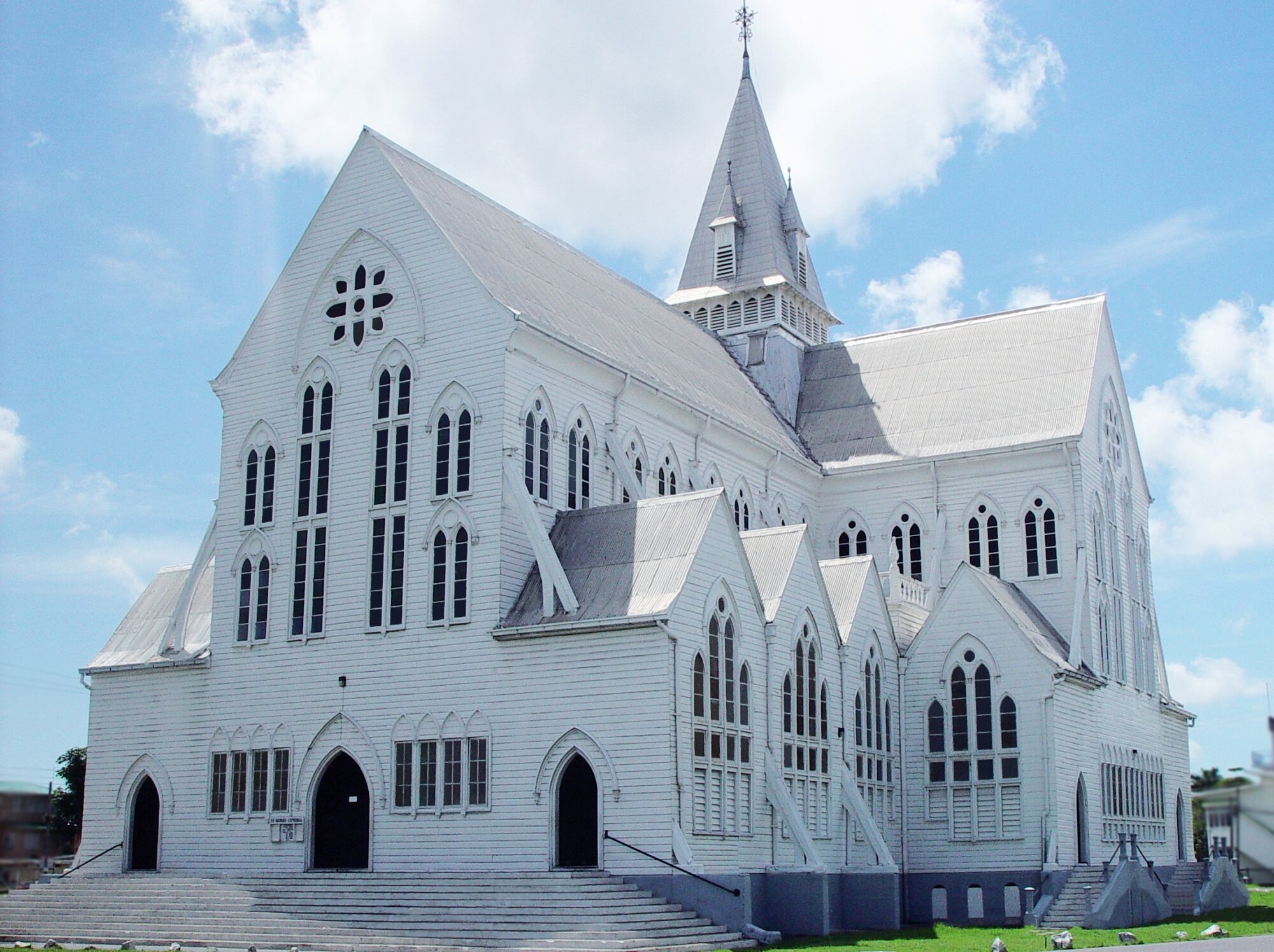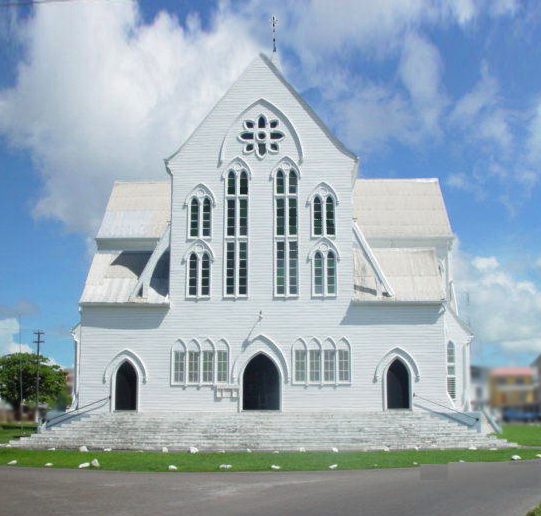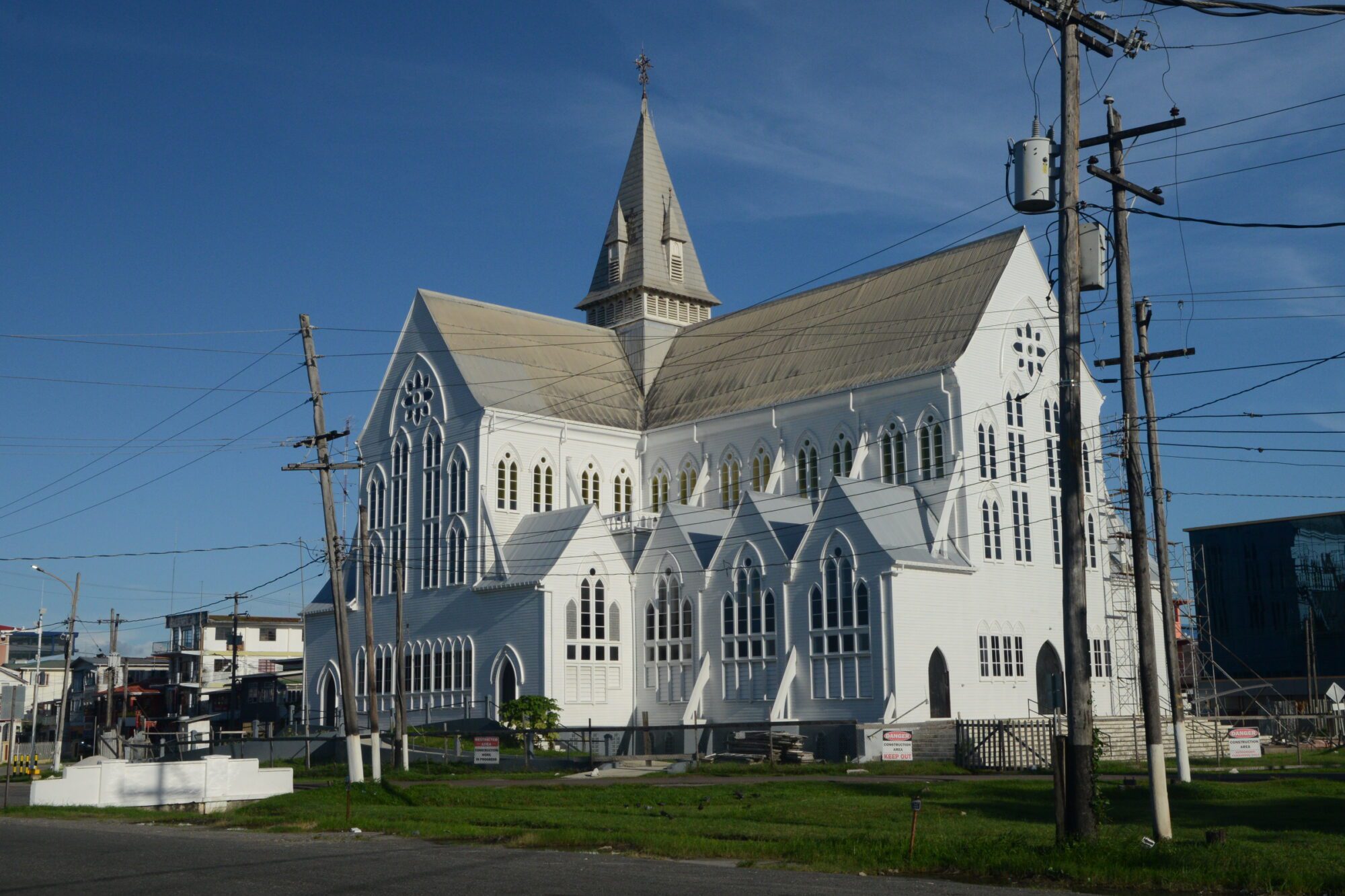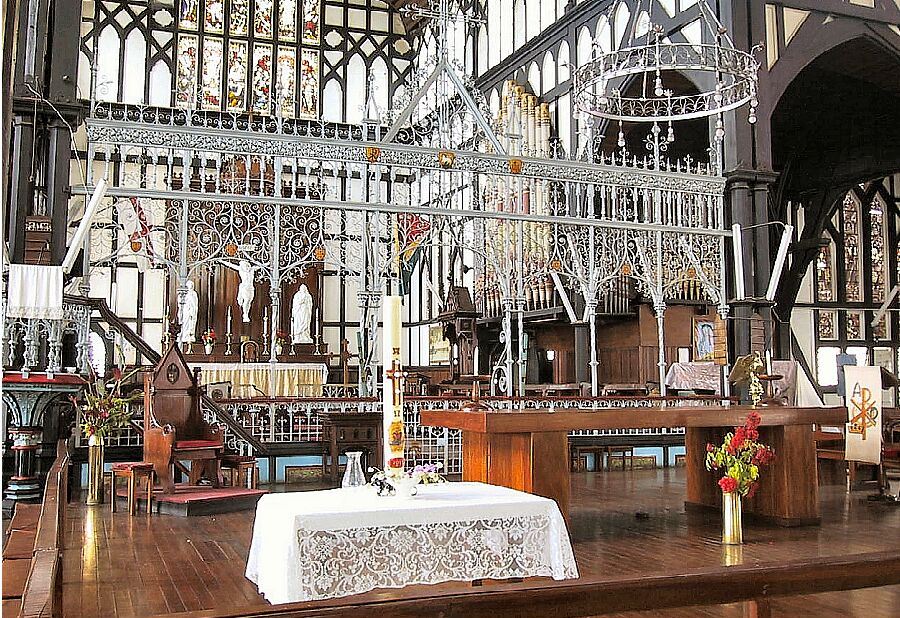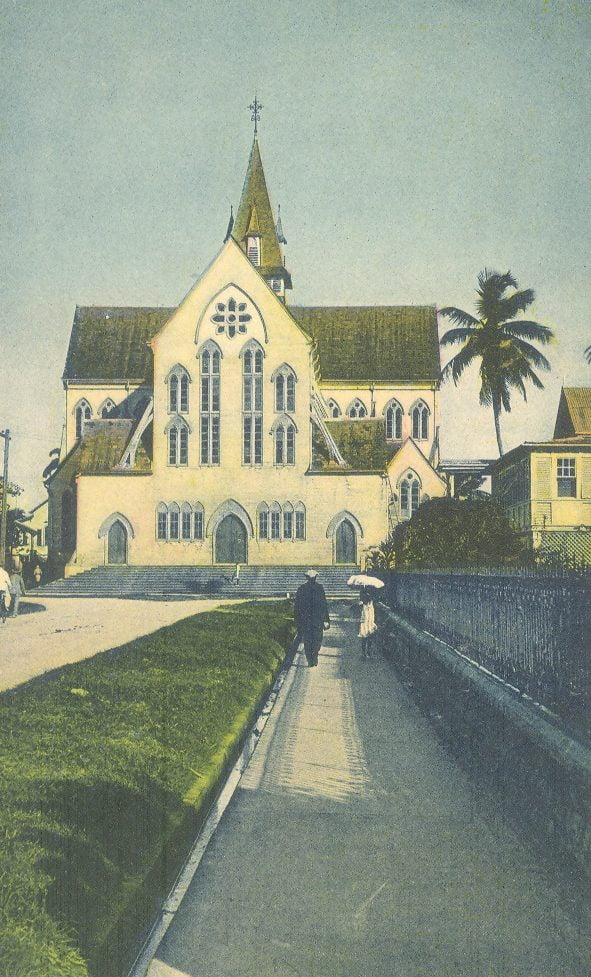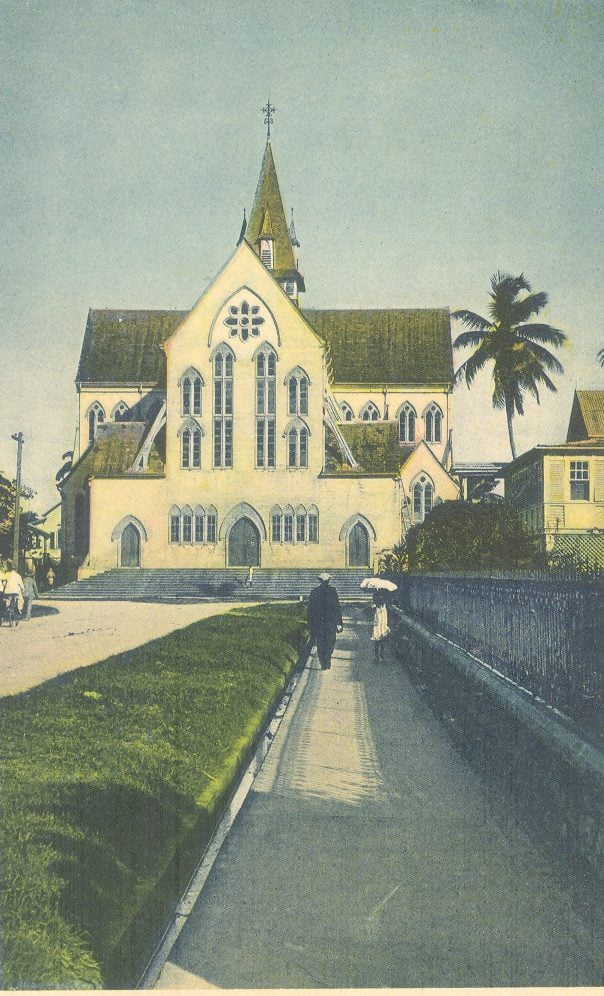Location: Lacytown, Georgetown
Classification: Religious
Period/ Year Built: Established circa 1796, current church foundation’s stone laid 1889, consecrated 1894
Historical Background / Description:
St. George’s Cathedral is considered one of Guyana’s most prestigious built wonders; this edifice is located along an oval roundabout on North Road in Lacytown, Georgetown. The Anglican Church was established in British Guiana circa 1796 and services were held in a small court room in the Court of Policy building. By 1805, the church’s membership outgrew the small room. Appeals by Reverend William Gibbs and Lieutenant-Governor Robert Nicholson led to the first chapel being built on the site of the present cathedral. And overtime, the membership outgrew this structure too.
The second cathedral was located approximately 12 metres (40 feet) west of the first church. The foundation stone was laid by Governor Henry Light on September 21, 1838. The building was completed on June 26, 1842, and was consecrated by the newly appointed bishop, Bishop William Piercy Austin, the first Anglican Bishop to British Guiana. It was a brick building and had a square tower located along the western end, which proved too heavy for its foundation.
At 33 years old, the second building was demolished due to it being rendered unsafe and the parish was relocated in 1877 after the third church, the Pro-Cathedral was built as a temporary building. The Pro-Cathedral as it is officially known, was located on the lawns of the Deanery.
The present structure’s design was done by British Architect, Sir Arthur Bloomfield. While work started on the cathedral in 1888, the foundation stone was laid in 1889. In 1892, the church, though incomplete, was opened for worship. On November 8, 1894, the fourth St. George’s Cathedral, was consecrated by Bishop William Proctor Swaby.
The Gothic Revival church, raised on a terrace and over 40 metres (132 feet) tall, was once considered the state church of the colony. Some architectural features of the structure include its spire, buttresses, and Gothic arched windows. The church was gazetted as a National Monument in April, 2001.
